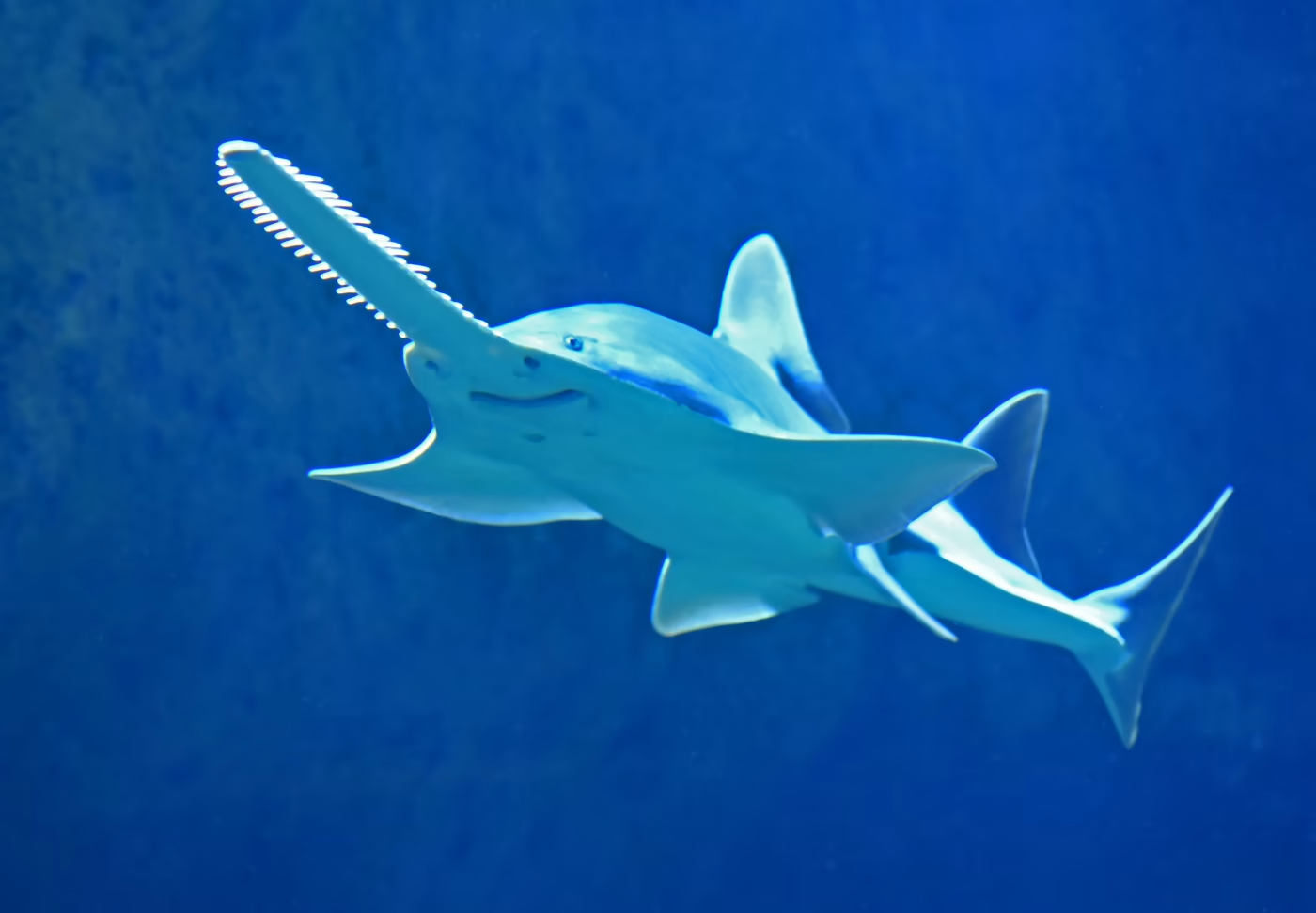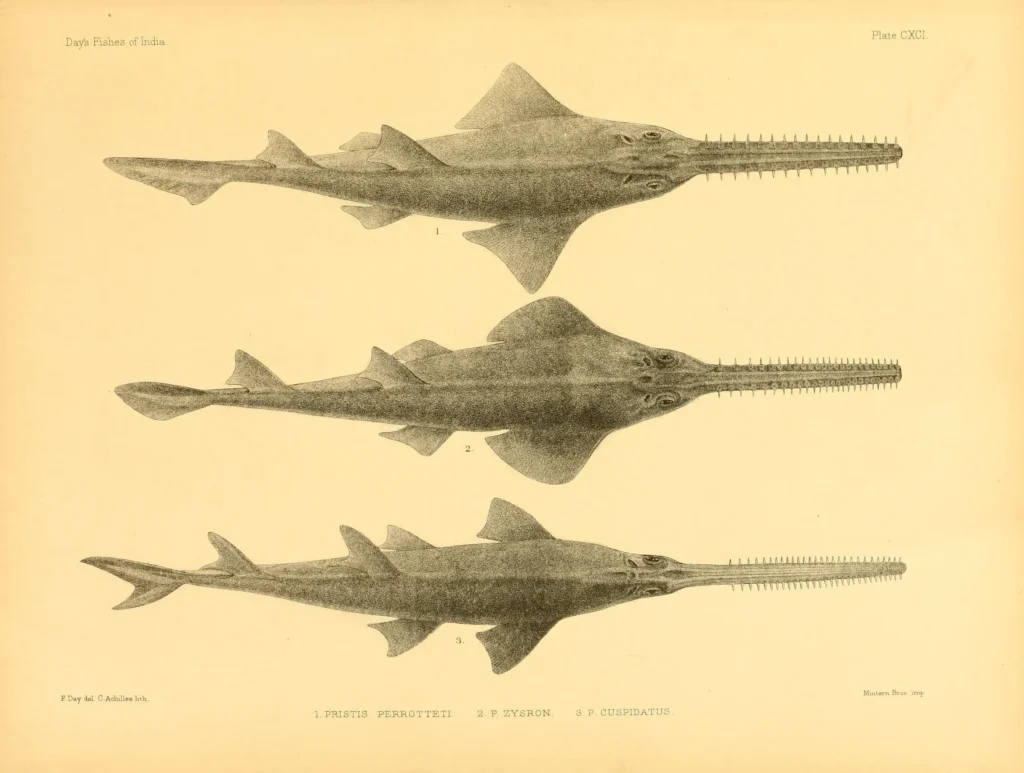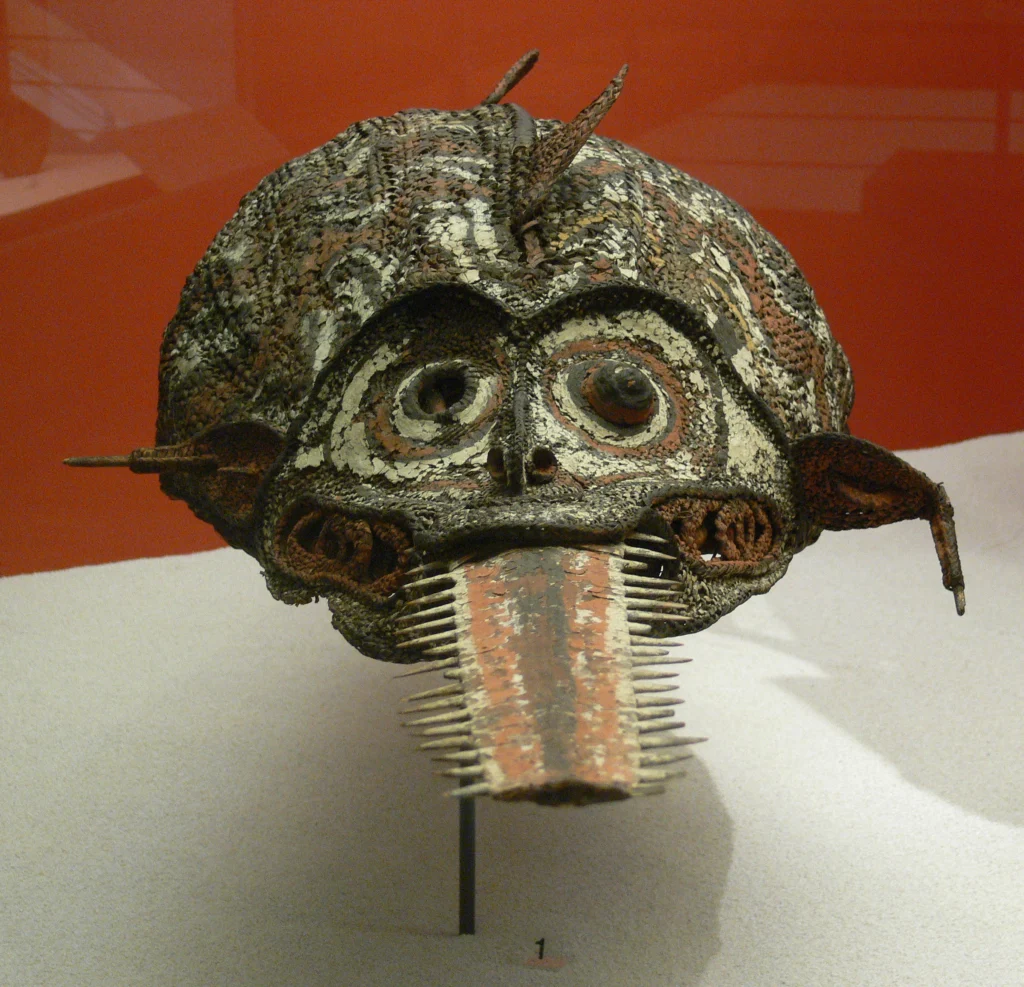Physical Address
304 North Cardinal St.
Dorchester Center, MA 02124

Sawfish, also known as carpenter sharks, with their distinctive saw-like snouts, are among the most fascinating yet critically endangered marine species. These unique creatures, belonging to the family Pristidae, are known for their elongated, toothed rostrums that give them a formidable appearance. This article delves into the intriguing characteristics of sawfish, their ecological significance, the threats they face, and the ongoing efforts to protect them from extinction.
Sawfish are characterized by their long, flattened snouts lined with sharp, tooth-like structures called denticles. These “saws” are used for hunting and self-defense. Sawfish use their rostrums to detect and stun prey, such as fish and crustaceans, by swiping through schools of fish or disturbing the sandy sea floor.
| Genus and species group | Image | Scientific name | Common names(most frequently used listed first) | IUCN status | Distribution | Main habitats | |
| Anoxypristis | Anoxypristis cuspidata(Latham, 1794) | Narrow sawfish,knifetooth sawfish, pointed sawfish | Indo-Pacific | Marine waters, estuaries | |||
| Pristis | Smalltooths | Pristis clavataGarman, 1906 | Dwarf sawfish,Queensland sawfish | Indo-Pacific | Marine waters, estuaries | ||
| Pristis pectinataLatham, 1794 | Smalltooth sawfish | Atlantic | Marine waters, estuaries | ||||
| Pristis zijsronBleeker, 1851 | Green sawfish,longcomb sawfish, narrowsnout sawfish, olive sawfish | Indo-Pacific | Marine waters, estuaries | ||||
| Largetooths | Pristis pristis(Linnaeus, 1758) | Largetooth sawfish,common sawfish, wide sawfish, freshwater sawfish, river sawfish, Leichhardt’s sawfish, northern sawfish | Atlantic,Indo-Pacific,East Pacific | Marine waters, estuaries, rivers, lakes | |||
There are five species of sawfish, ranging in size from the small dwarf sawfish, which can grow up to 10 feet, to the giant green sawfish, which can reach lengths of over 20 feet. Despite their fearsome appearance, sawfish are generally harmless to humans and are more likely to avoid contact than engage in aggressive behavior.
“Comparison of the largetooth (top), green (middle) and narrow sawfish (bottom). Notice especially the structure of the saw, tail and pectoral fins, and the position of the first dorsal fin compared to the pelvic fins”

‘Day, Francis’
Sawfish play a crucial role in maintaining the health of marine ecosystems. As apex predators, they help regulate the populations of other fish species, ensuring a balanced and diverse aquatic environment. Their presence indicates a healthy, functioning ecosystem, as they are sensitive to environmental changes and require specific habitats to thrive.
Sawfish inhabit a range of environments, including coastal areas, estuaries, and rivers. Their ability to move between saltwater and freshwater systems makes them important indicators of the health of these interconnected ecosystems. By studying sawfish, scientists can gain insights into the overall health of marine and freshwater habitats.
Sawfish are among the most endangered groups of elasmobranchs, primarily due to habitat loss, bycatch in fishing gear, and illegal trade. Their rostrums are highly valued in traditional medicine and as curios, leading to targeted hunting. Additionally, their habitats, such as mangroves and estuaries, are increasingly threatened by coastal development and pollution.
Conservation efforts for sawfish are multifaceted and involve international cooperation. Several countries have implemented legal protections, such as banning the capture and trade of sawfish and designating critical habitats for their conservation. Organizations like the International Union for Conservation of Nature (IUCN) and the Sawfish Conservation Society work tirelessly to raise awareness, conduct research, and promote conservation strategies.
Research on sawfish has provided valuable insights into their biology, behavior, and ecology. Tagging and tracking studies have revealed their migration patterns, habitat preferences, and reproductive behaviors. For instance, some species of sawfish exhibit philopatry, meaning they return to their birthplace to give birth, which has important implications for their conservation.
| Kingdom | Animalia |
| Phylum | Chordata |
| Class | Chondrichthyes |
| Order | Rhinopristiformes |
| Family | Pristidae |
| Genus | Pristis |
| Species | pectinata |
Marine biologist Dr. Sarah Foster shares her experiences studying sawfish:
"Encountering a sawfish in the wild is an awe-inspiring experience. Their prehistoric appearance and graceful movements are truly captivating. Each observation provides a glimpse into their complex lives and underscores the importance of protecting these incredible animals."
Sawfish hold cultural significance in many indigenous communities, where they are often featured in myths, art, and traditional practices. In some cultures, sawfish are considered symbols of strength and protection. Efforts to conserve sawfish often involve collaborating with local communities to integrate traditional knowledge and practices into modern conservation strategies.

“Engraving showing a whale and several fish, including a sawfish, in China”
(Johan Nieuhof: Het gezantschap der Neêrlandtsche Oost-Indische Compagnie, 1665)
“A mask with a sawfish rostrum from Sepik, Papua New Guinea, now housed at the Ethnological Museum of Berlin”

‘Photo: Andreas Praefcke – Self-photographed’
In history, sawfish have been revered and feared by various cultures. Ancient Egyptian art depicts sawfish, indicating their significance in early human societies. In some West African cultures, sawfish are seen as powerful spirits, and their rostrums are used in rituals and ceremonies. These historical and cultural connections highlight the deep relationship between humans and sawfish, emphasizing the importance of preserving these remarkable creatures not only for ecological reasons but also for their cultural heritage.
[Stunning Footage of Sawfish Infographic]
Sawfish are remarkable creatures that play vital roles in marine ecosystems. Their unique characteristics, ecological importance, and the urgent need for their conservation make them a critical focus for marine biologists and conservationists. By understanding and appreciating sawfish, we not only fulfill our curiosity but also recognize the importance of protecting these ancient and endangered species.
The fight to save sawfish is a race against time, highlighting the need for immediate and sustained conservation efforts. Through collective action and global awareness, there is hope that we can secure a future for sawfish and preserve the biodiversity of our oceans.
Dhon banaicen vai sei hoice 🤧
dhon bolsen vi sei hoise🙄